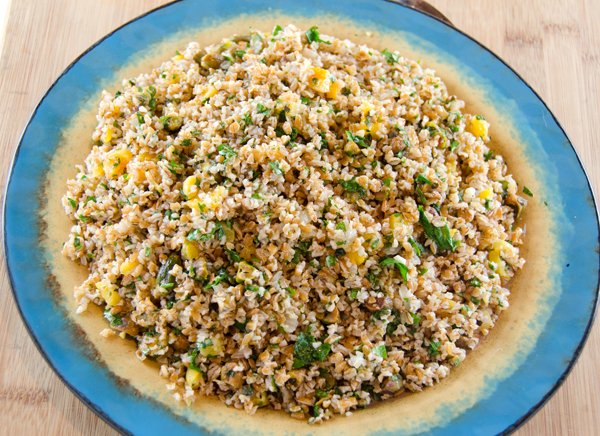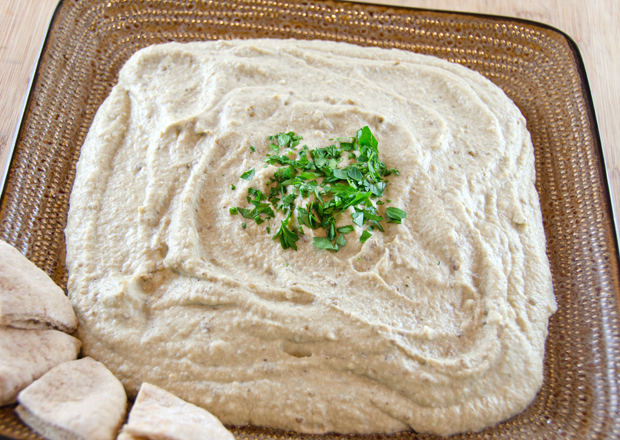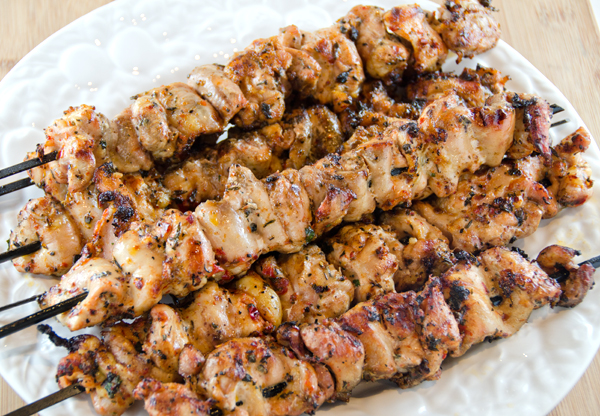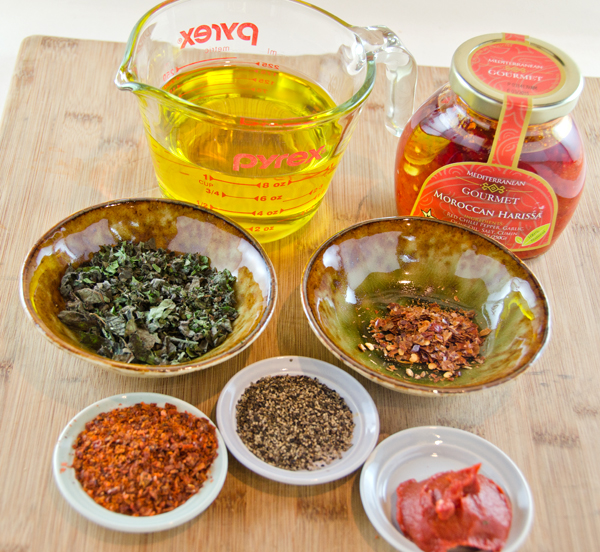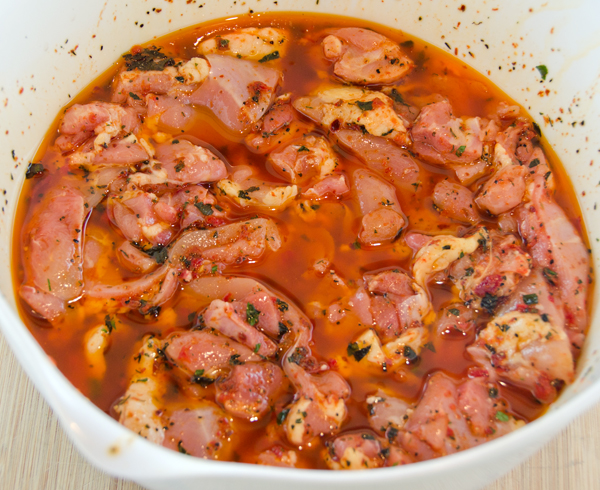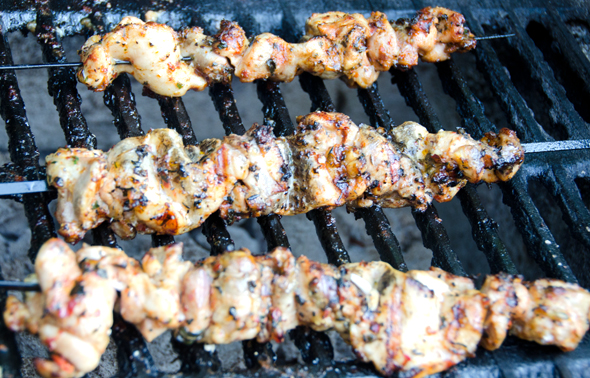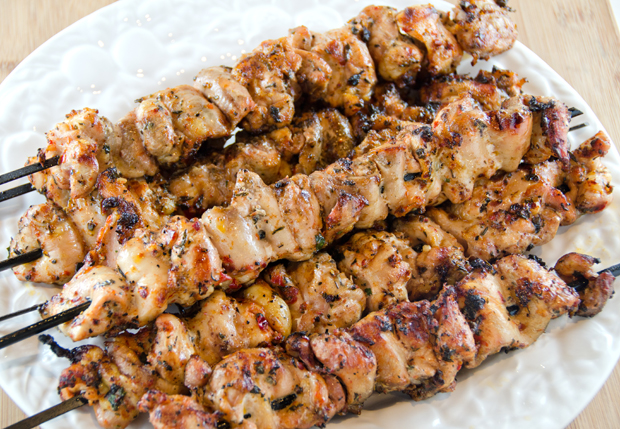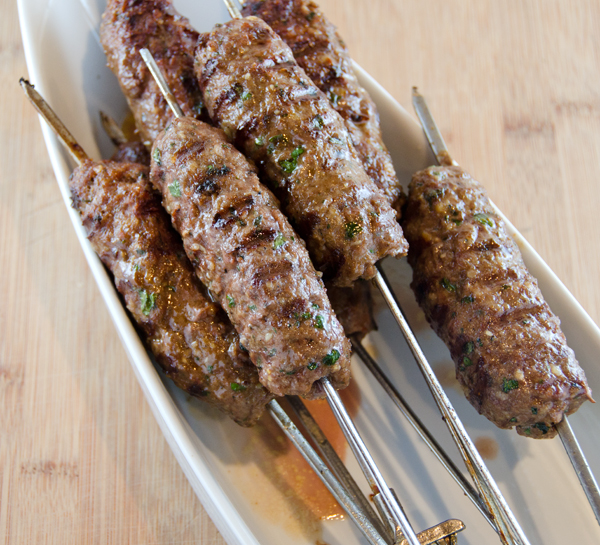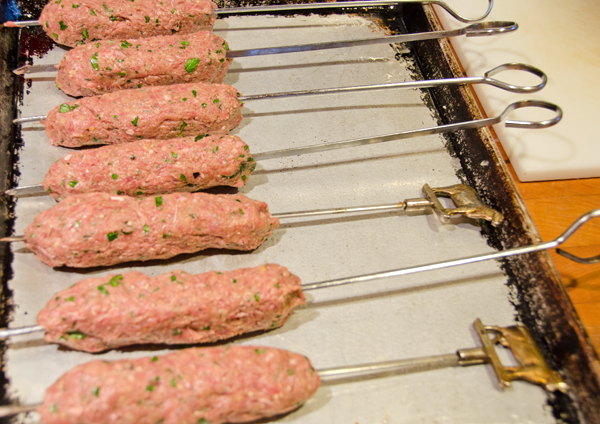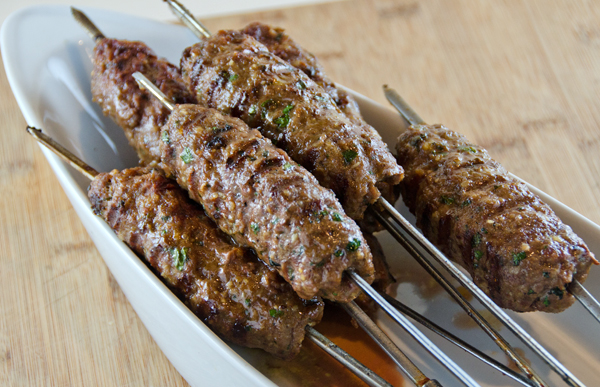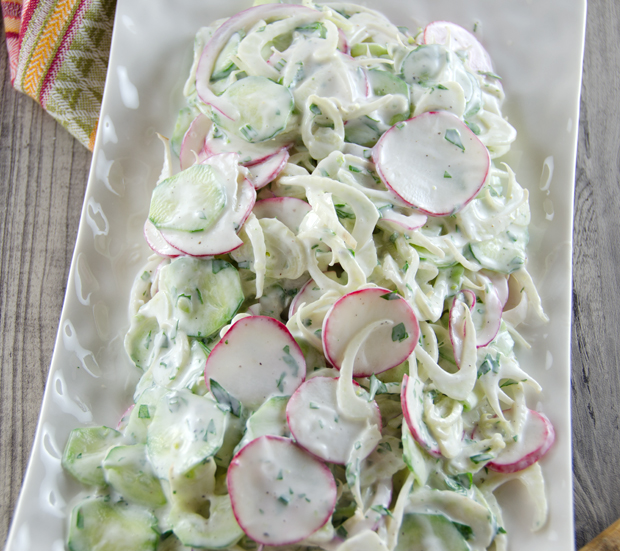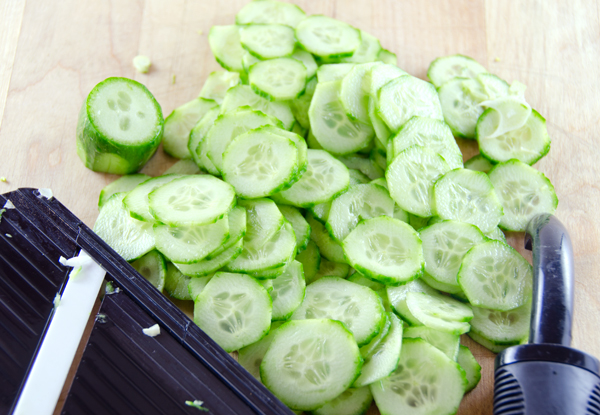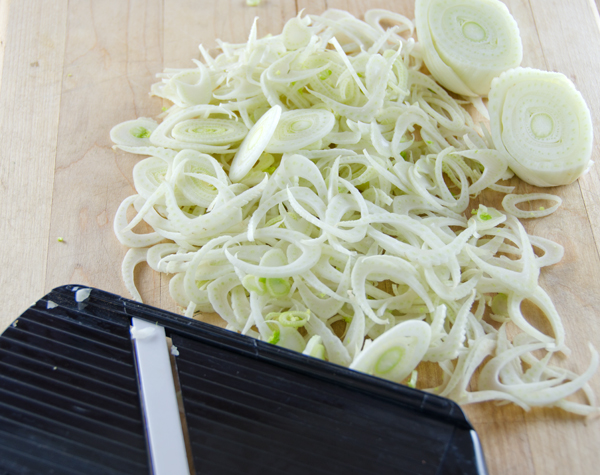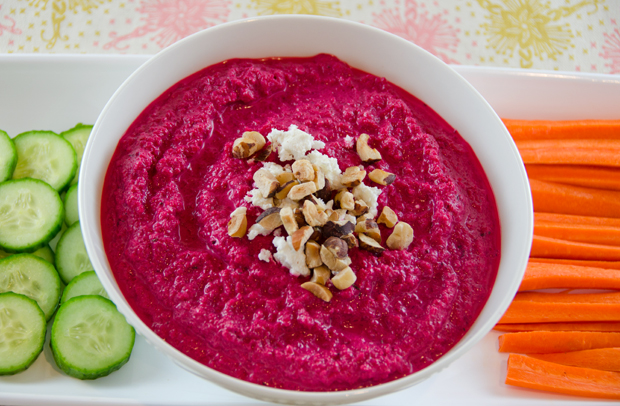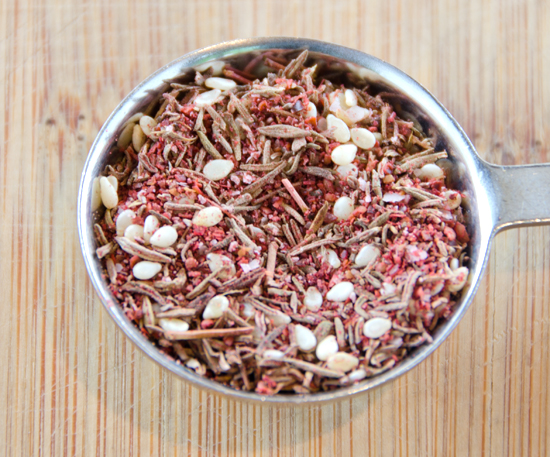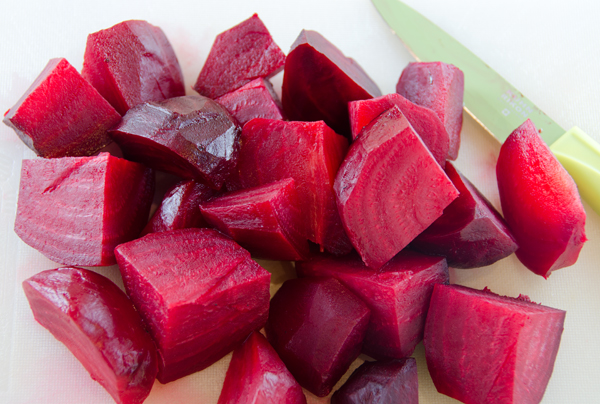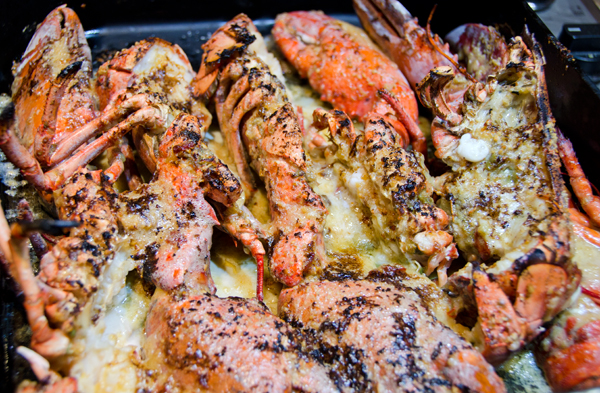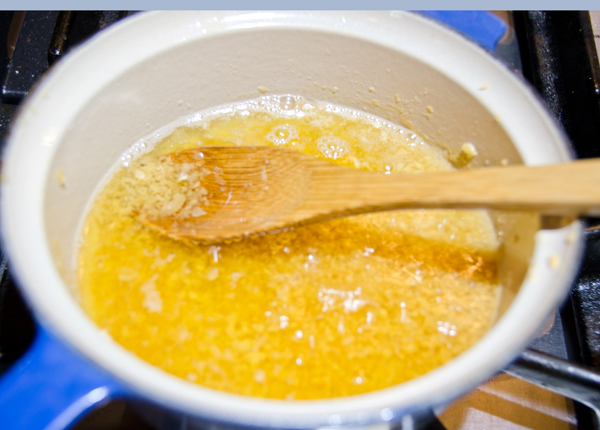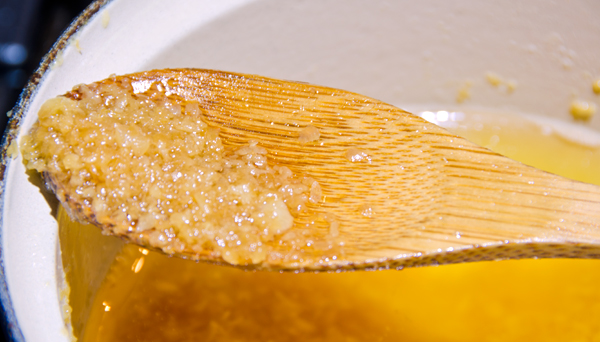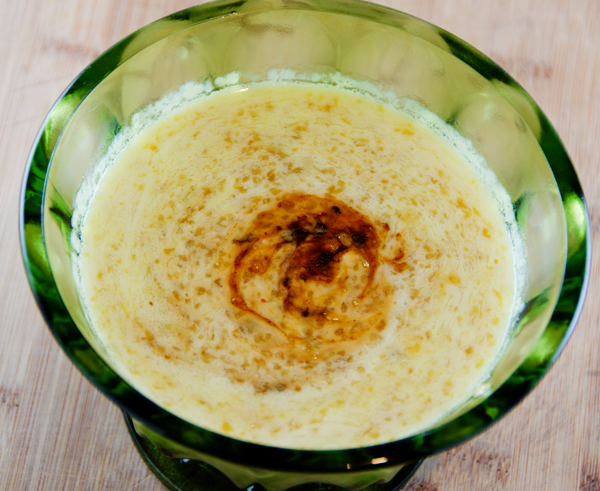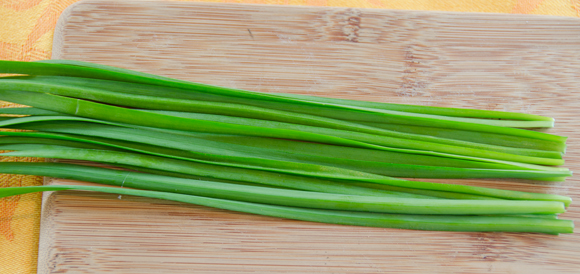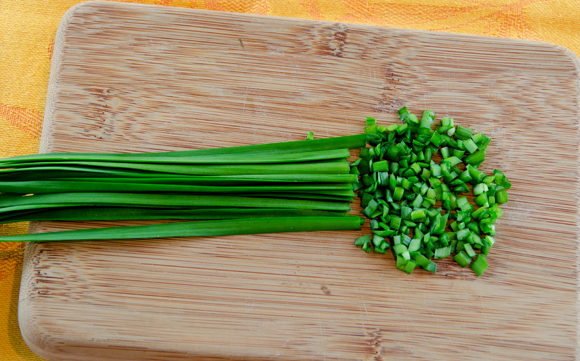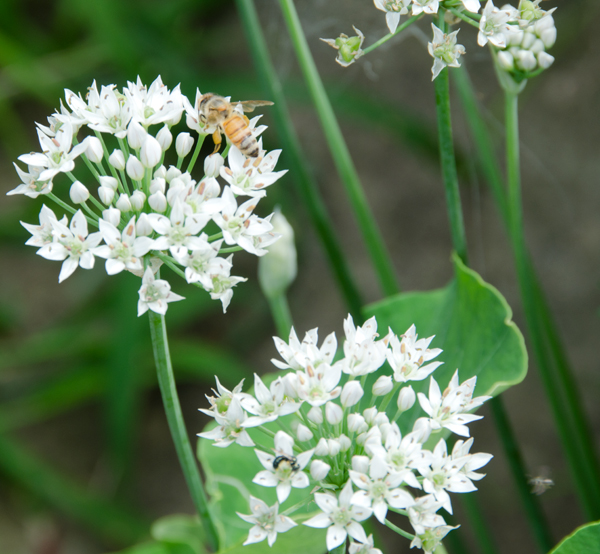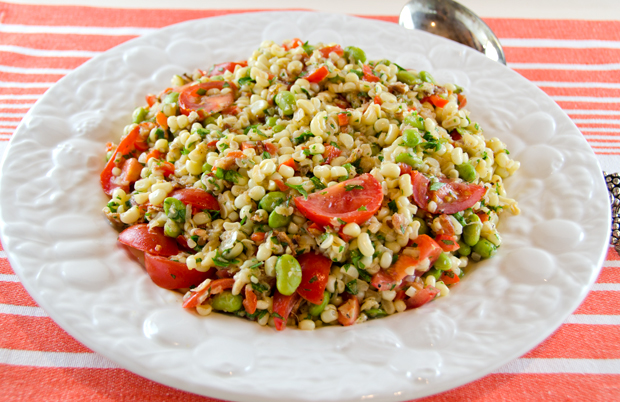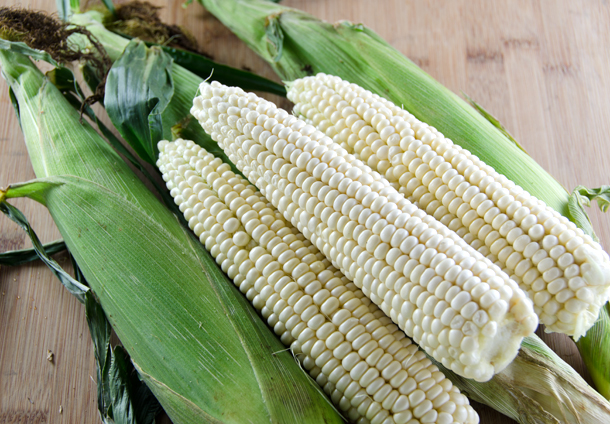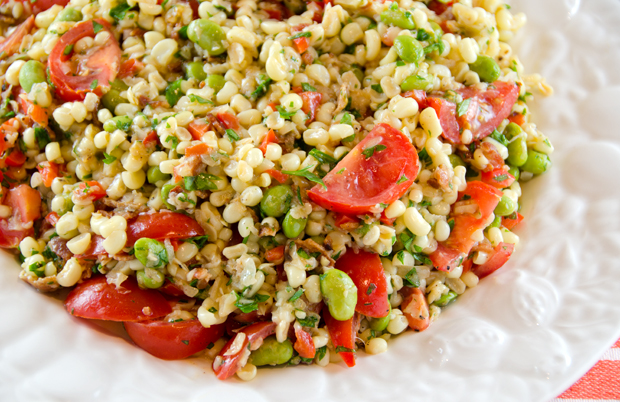Every good meal deserves some delicious and interesting side dishes and our Middle Eastern feast was no exception. I combined some past favorites with new additions.
Every Middle Eastern country seems to have their own variation of an eggplant dip, baba ghanoush (also spelled ghanouj) is the Lebanese variety of this classic. This dish, often referred to as eggplant caviar is smooth, creamy and smoky. Char your eggplants first over a grill or a gas stove top to give it’s classic smoky flavor. The creamy eggplant flesh is combined with tahini (sesame seed paste), fragrant cumin and tart fresh squeezed lemon juice. Whether purple, white, speckled, fat and round or long and thin, choose eggplant that have firm, taut exteriors with unblemished glossy skin. So what does baba ghanoush mean? Middle Eastern cooking authority, Clifford Wright states the phrase “baba ghanoush” is untranslatable. Everyone agrees that baba is the Arabic word for an endearing form of the word father, think daddy… So Wright’s premise is that the eggplant is the “daddy” of the Arabic vegetable kingdom. Ghanoush, well that’s another story. I have seen everything from cute, coquettish, to spoiled or pampered. Could the originator of this classic been a privileged sultan? We may never know….
Correctly stated, tabbouleh is a Lebanese herb salad with bulgur and not a bulgur salad with herbs. My second side dish is similar to, but not tabbouleh since it does start out with copious amounts of garden fresh parsley, mint and cilantro combined with bulgur wheat. This recipe swaps out the traditional tomatoes and cucumbers for tangy sweet apricots and delicately nutty pistachios. Bulgur is whole wheat grain that has been cracked and sifted into four sizes ranging from fine to coarse. It is sometimes referred to as cracked wheat, but that is a misnomer. It differs from cracked wheat since bulgur has been partially cooked by parboiling or steaming. Cracked wheat is uncooked wheat that is dried and coarsely cracked, preserving the bran and germ layers. Bulgur cooks in half the time of cracked wheat. Bulgur is a nutritional powerhouse, high in fiber, protein, iron, magnesium and B vitamins. Perfect as a take along for picnics and potlucks, bulgur salad with apricots and pistachios could become a main dish with the addition of chicken or shrimp. To properly eat your bulgur salad, scoop it up with a leaf of romaine lettuce, not with a pita or fork and knife.
Israeli couscous is a subject I covered extensively last summer in this post. Pearled or Israeli couscous, like regular couscous is a whole grain made with semolina or wheat flour. It has a slightly chewy texture. In this recipe, Israeli or pearled couscous is combined with the garden’s first of the season yellow beans and pickled red onions. Toasting the grains before cooking gives them a nutty flavor. I found it is best to drain the pickled onion before adding to other ingredients to prevent the vinegar from overwhelming the dish. The pickled red onions will turn your couscous pink. One thing is certain, I have found no “written in stone” cooking proportions of Israeli couscous to water or broth, but I have found that 2 to 1, liquid to Israeli couscous works for me, otherwise the couscous retains too much liquid and doesn’t mix well with the other ingredients.
Chickpeas are a staple of Middle Eastern cuisine and the base for two of the classics, hummus and falafel. Chickpea, carrot and parsley salad took advantage of our carrot and radish harvest and made a colorful side with our meal. Fresh cooked chickpeas are a revelation. The first time I had them was as a part of a Valentine’s day dinner my dear husband cooked for me many years ago. I’m not saying that canned are bad, in most instances I prefer the convenience of canned. Just cook them sometime to appreciate the wonderful nutty flavor of fresh chickpeas.
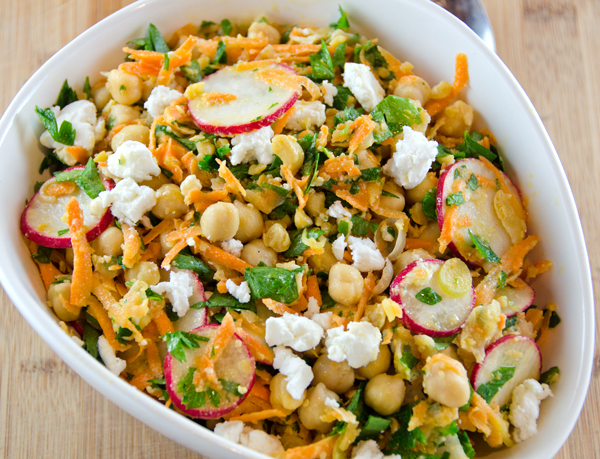 Chickpea, Carrot and Parsley Salad Serves 4-6
Chickpea, Carrot and Parsley Salad Serves 4-6
from Fine Cooking magazine
Ingredients
- 2c chickpeas, drained and rinsed
- 1c loosely packed coarsely chopped fresh flat leaved parsley
- 1/2c sliced radishes
- 1/4c chopped scallions
- 3T fresh lemon juice
- 1t ground coriander
- 1t ground cumin
- Kosher salt and fresh ground pepper
- 6T extra virgin olive oil
- 1/3c crumbled feta cheese
- 1/3c toasted pine nuts
Directions
- Mash 1/2c chickpeas into a coarse paste with a potato masher or wooden spoon.
- Toss in the remaining chickpeas, parsley, carrots, radishes and scallions. Stir to combine.
- Whisk together the lemon juice, spices, 1/2t salt and a generous grind of pepper. Whisk ingredients while adding the olive oil in a slow steady stream. Pour over the salad and toss gently. Season to taste with salt and pepper. Top with feta cheese and pine nuts and serve.
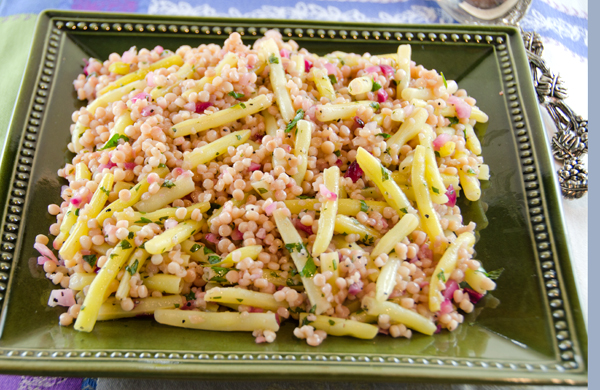 Israeli Couscous, Yellow Bean and Pickled Red Onion Salad
Israeli Couscous, Yellow Bean and Pickled Red Onion Salad
Serves six
Adapted slightly from Fine Cooking magazine
Ingredients
- 1/2c red onion in small dice
- 1/4c red wine vinegar
- 1T granulated sugar
- Kosher salt
- 3/4lb yellow or green beans trimmed and cut into 1/2″ pieces\
- 1/2c pearled or Israeli couscous
- 1c water or broth
- 2T coarsely chopped fresh flat-leafed parsley
- 2T extra-virgin olive oil
- Freshly ground black pepper
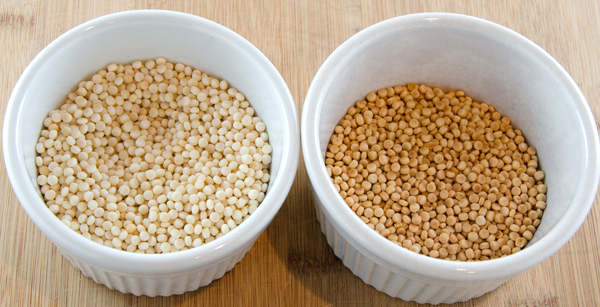
Directions
- Put the onions in a bowl. In a small saucepan, bring the vinegar, sugar and 1/2T salt to a boil. Pour the mixture over the onions and let sit for 20 minutes. Drain and reserve liquid.
- Bring a medium saucepan of well salted water to a boil over high heat and cook the beans until crisp tender, about 4-5 minutes. Drain beans in a colander.
- Toast the couscous in a dry skillet stirring over medium heat until golden brown, about 3-4 minutes. In a small saucepan bring water or broth to a boil. Cook the couscous in the boiling water until tender, about 8-10 minutes. Drain in a colander.
- In a medium bowl toss the couscous, beans, onion, parsley and olive oil and toss. Add a little of the reserved vinegar to the salad if desired. Season to taste with salt and pepper and serve.
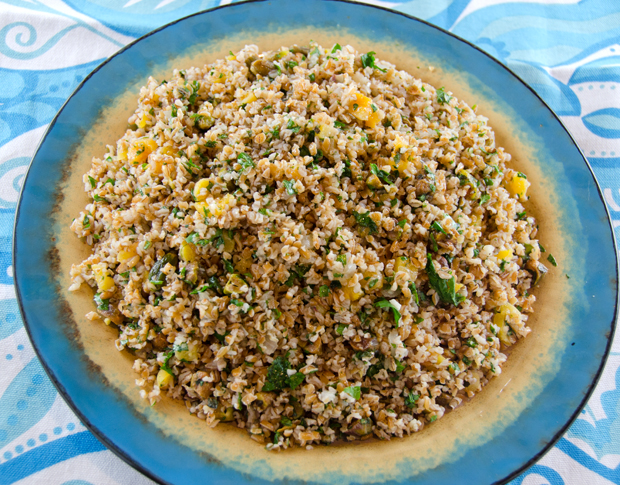 Bulgur Salad with Herbs, Pistachios and Apricots
Bulgur Salad with Herbs, Pistachios and Apricots
Serves 8 as a side dish
Adapted from Fine Cooking magazine
Ingredients
- 2c medium bulgur
- Kosher salt
- 2/3c plus 2T extra virgin olive oil
- 1/3c minced shallots
- 1T minced garlic
- 1/2c medium chopped dried apricots
- 1c coarsely chopped fresh flat leafed parsley
- 1/2c coarsely chopped fresh cilantro
- 1/2c coarsely chopped fresh mint
- 1/2c chopped roasted pistachios
- 1/3c fresh lemon juice
- Freshly ground black pepper

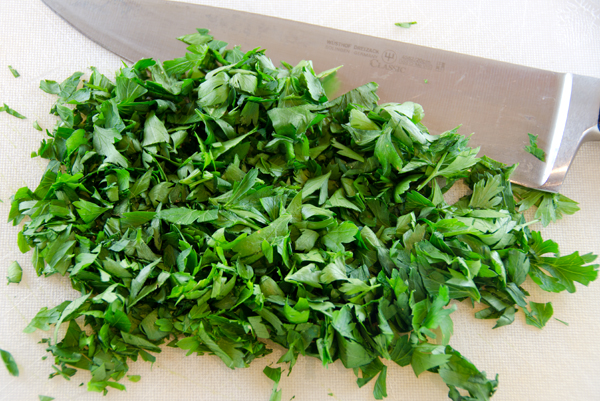
Directions
- In a large skillet, toast the bulgur over medium heat, stirring constantly with a wooden spoon, until aromatic and a shade darker. Transfer to a bowl.
- In a medium saucepan bring 2 cups of water and 1t salt to a simmer over medium high heat.
- While you are waiting for the water to come to a simmer, heat 2T oil in the skillet over medium high heat. Add the shallot and the garlic and cook, stirring until tender, about 3 minutes. Stir in the bulgur, apricots, 1t salt and the now simmering water.
- Put a lid on the skillet and remove it from the heat. Let stand until the bulgur is tender and has completely absorbed the liquid, 35-40 minutes. Gently fold in the herbs and pistachios.
- In a small bowl, whisk the lemon juice with a 1/4t each salt and pepper. Slowly whisk in the remaining 2/3c olive oil in a slow stream.
- Drizzle the salad with the dressing, season to taste with salt and pepper and serve. Salad can be made a day ahead. Bring to cool room temperature before serving. Season to taste with additional salt and pepper if necessary.
Baba Ganoush
Serve 6-8 as a side dish
Ingredients
- 2 large eggplants
- 5 cloves garlic, minced
- Kosher salt
- 1/2c tahini
- 1/2t ground cumin
- 1/2c fresh lemon juice
- 1T extra virgin olive oil
- Fresh chopped flat leaf parsley
Directions
- Preheat oven to 375°F
- Char eggplant over a grill or a gas cooktop, turning occasionally until the skin turns black, 5-10 minutes.
- Place the eggplants on a baking sheet and bake until very soft, 15-20 minutes. Cool the eggplant and peel the skin.
- Place the pulp in a food processor and pulse to make a smooth paste. Add garlic, salt, cumin, tahini and lemon juice to taste and pulse to combine. Season with additional lemon juice or salt if needed.
- Spread the puree on a plate. Drizzle with additional olive oil if desired and sprinkle with parsley. Serve at room temperature with pita bread.
